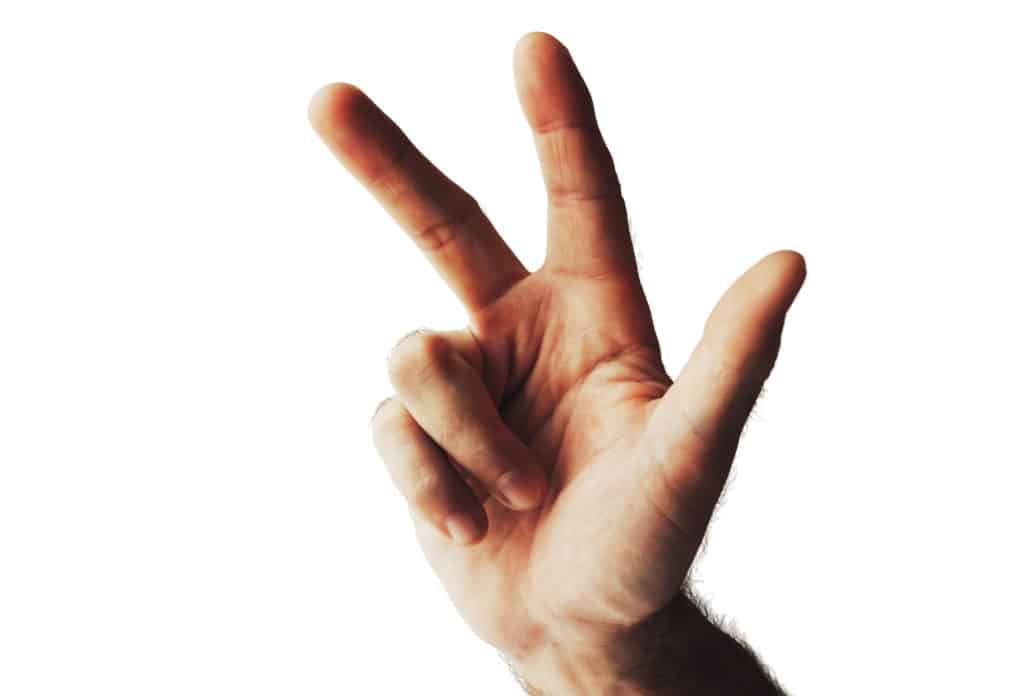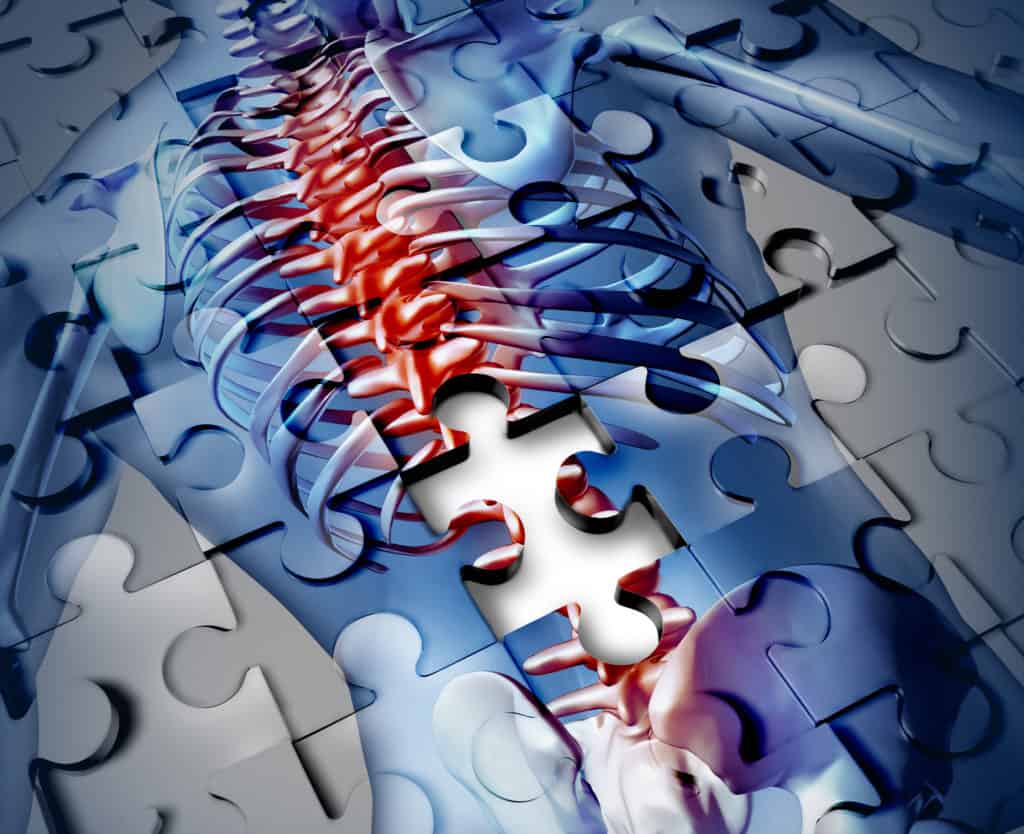What is Myofascia?
And why is it important?
Myofascia is the multi-layered connective tissue in your body that holds, stabilizes, and connects everything. Without myofascia, you’d be a pile of bones, blood vessels, muscles, organs, and skin – lying in a heap on the floor.
We tell our patients to think of it like a full-body suit – covering everything from the top of your head to your toes, including your eyes, nose, lips, and mouth.
You know that party trick you do when you roll your eyes around your head?
Yep, that’s made possible by myofascia.
Otherwise, your eyeballs would spin right out of your head.
However, it’s more than the hypothetical glue that holds us together. It’s much cleverer than that.
The multifaceted myofascial tissue – or fascia as it’s sometimes called – in simple terms, is made up of water, hyaluronic acid, collagen, and elastin. But it also contains:
- White Blood Cells are part of your body’s immune system that defends against bacterial and viral infections, prevents disease, and destroys cancer cells.
- Mast Cells – that protect the body from allergens, toxins, and bacteria.
- Fibroblasts – play an essential role in wound healing and building and repairing the skin. Pericytes regulate blood flow to our brains and central nervous system.
- Lastly, Adipocytes – otherwise known as fat cells – contribute to the functioning of the endocrine system and hormone production.
It’s also full of highly sensitive nerve endings and pain, movement, and spatial awareness receptors. They send signals back and forwards to the brain to stop you from injuring yourself, falling, or colliding with things.
What Is Myofascia: The Three Types Of Myofascial Tissue

There are three different types of myofascial tissue:
- The Superficial Fascia lies underneath the skin and the dermis. It connects the skin to the rest of the body – the bones, muscles, and organs. It’s also sometimes referred to as the subcutaneous layer or hypodermis. It’s the layer that’s most commonly involved in lacerations and stab wounds. As well as attaching skin to muscle and maintaining a constant body temperature, this fatty layer of yellowish myofascia is a vital part of the neck and cervical spine anatomy. It separates the delicate structures, like veins, lymph nodes, and the platysma muscle – into protected compartments.
- When we go deeper, there’s the fibrous (unimaginatively named) Deep Fascia. This dense and strong fascial layer supports and protects the muscles, holds our bones in place, and envelops the tendons, ligaments, and delicate network of blood vessels that run throughout the body. It’s your body’s equivalent of the National Guard – protecting it from injury and bacteria entering via the skin and the mucous membranes to prevent infection from spreading and invading the muscles. It is full of nerves and pain sensors, too, so if you tear a tendon or strain a ligament, your deep fascia will tell you about it – loud and clear – by sending pain signals back to your brain.
- Diving deeper still, we find the Visceral Fascia surrounding our internal organs. This layer keeps our hearts beating, lungs inflating and deflating, and our digestive systems moving waste and toxins out of our body.
It’s a bit like your body’s built-in bubble wrap, too – wrapping and protecting precious organs and arteries like the brain, liver, kidneys, intestines, and abdominal aorta. The Visceral Fascia holds these structures in place with a web-like matrix of connective tissue and holds and protects the nerves and blood vessels alongside them that keep them functioning.
But regardless of the type, the objective of the myofascia is always to protect, stabilize and maintain homeostasis, and protect from illness and injury – keeping the body in balance, alive and functioning. It’s the peacekeeper.
*FACT: If the collagen fibers in myofascia went to the gym, they could bench press 10,000 times their body weight. Easily stretch to 150% of their original size and bounce back to baseline without injury.
Why Is Myofascia Important?

We’ve probably covered off why it’s important by describing the main functions of myofascia. But let’s go into a little more detail about why this often-overlooked connective tissue is essential to health and wellbeing.
Inside the body, myofascia is involved in brain and central nervous system signaling and a host of other chemical reactions – like hormone production and immune system function. In women, for instance. Scientists have shown that myofascia contains sex hormone receptors. These receptors up and down-regulate collagen production based on estrogen levels, making you more or less prone to injury depending on where you are in the menstrual or post-menopausal life cycle.
These studies also suggest a bi-directional link between fascia, hormone balance, fertility, and post-menopausal symptoms, particularly for women. If your fascia is functioning well, your hormones are more likely to be balanced and vice versa. Releasing tension through Myofascial Release Therapy also allows blood flow and oxygen to flow around the body without interruption. This increase improves the thyroid and pituitary gland function and the ovaries, uterus, and fallopian tubes’ health. Clever, right?
So, suppose you’re struggling to get pregnant, suffering from hormone imbalances or severe menopausal symptoms. In that case, it’s worth considering Myofascial Release Therapy in conjunction with other complementary therapies and advice from your Doctor.
In the case of the immune system, myofascia is critical to its proper functioning and, therefore, disease and serious illness prevention. The multiple layers of superficial, deep, and visceral myofascia protect us from invasive pathogens. In some studies, Myofascial Release Therapy – particularly in the craniocervical region – has also been shown to influence immunological function directly.
But as well as being a master messenger, this extraordinary tissue also enables the body to move and twist and absorb pressure from running and jumping and the impact of accidental collisions, trips, falls, and unexpected blows – like being hit over the head by someone or something. In some ways, it’s like the shock absorbers on your car – constantly reacting and stabilizing in response to rough terrain and the external environment.
Some might describe myofascia as hinges on a door – but I believe that’s too simplistic because we don’t move in a robotic back and forward motion. Instead, we pirouette, contract and expand and move different parts of our body simultaneously. The Myofascia connects all aspects of the body as one, so each stretch or contraction affects the whole being.
For instance, when the body is stressed or injured in one spot, like a neck, shoulder, or knee injury – the trauma reverberates throughout the body via the sensitive myofascial tissue.
So, it’s easy to see why problems with myofascia cause a whole host of chronic health problems that traditional physical therapists and Western Medicine doctors miss. Because they focus solely on the initial site of injury, illness, or inflammation, once that spot appears to be “healed,” they believe their work is complete.
But pain often reappears in other body sites that seem unconnected – often many years later, and Western medicine doesn’t connect the dots, which is where Myofascial Release Therapy comes in. First, to identify the connection with your medical history, and second to release and fully heal the problem.
So, if you’ve visited multiple doctors and physical therapists, but you’re still in pain. It could be a problem with your myofascia, and Myofascial Release Therapy has the potential to solve your problems once and for all.
Could It Be Your Myofascia?

Do you suffer from chronic headaches and migraines, tinnitus, chronic low back, knee, or neck pain? Do you have pain that nothing else has helped?
Myofascial Release Therapy is the last in a long line of treatments they’ve tried for many patients. From painkillers, steroid injections, traditional Physical Therapy, and generic exercise regimes to supplements, miserable detox regimes, and elimination diets. But nothing has helped until they try Myofascial Release Therapy, and something “just clicks.”
Often, they’ve been stuck in pain for months, years, or even decades, but myofascial trigger points and a holistic form of therapy that help the body heal itself were the overlooked key to getting out of pain. It doesn’t happen overnight, of course – especially if you’ve been in pain for a long time. But most patients feel an immediate sense of relief and reduction in pain that continues each time they attend a session.
Are you ready to get out of pain?
Schedule your first appointment here.
Still not sure?

Why not download one of our Free Guides that explain precisely who Myofascial Release Therapy Is For and the 5 Things People Not Stuck In Pain Get Right. Or book a Telephone Consultation or 30-minute Discovery Session with one of our Myofascial Release Therapists to discuss your concerns and find out how we can help you. There is no charge for either of these options, and there is no obligation to book treatment after the call. It’s 100% up to you.
At certain times of the year, we also run educational classes and workshops where you can learn more about Myofascia and the role it plays in common chronic pain conditions. Register your interest here.
Don’t forget, you can contact us at any time through our contact page.

